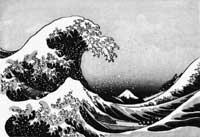Disaster ranking
2000/01/30 Kortabarria Olabarria, Beñardo - Elhuyar Zientzia
In 1999 there were numerous and great natural disasters, so more than one spoke of the end of the world. Landslides in Venezuela and Mexico, earthquakes in Turkey and Taiwan, and floods in South America had a lot to do, but have not been the biggest dependents.
As for the landslides, the largest occurred in Washington in 1980. It was the result of a small earthquake releasing 2.8 cubic kilometers of mud and rock from one side of the Mount St. Helens volcano. The measures adopted only allowed the death of 60 people. As for the number of fatalities, the most pernicious collapse took place on June 20, 1990, in western Iran, where between 40,000 and 50,000 people died. In the case of the earthquake, the hardest century occurred in Chile on 22 May 1960. On the Ritcher scale it reached 9.5. In this country more than 2,000 people died. The same earthquake caused tsunamis to appear in Hawaii, Japan and the Philippines, where people also died. The largest number of fatalities occurred in Tianjin China on 27 July 1976. According to other sources, the number of fatalities was 655,000.
As for the volcanic eruptions, the most powerful was that of the Novaruptam volcano in Alaska, which had launched the most magmas that a volcano has so far shot down. In Alaska there were no deaths, but as a result of the eruption of the Mont Pelee volcano in Martinique in 1902: 30,000 people. Floods are, finally, natural disasters with the highest number of fatalities on average every year. The deadliest of all time took place in Bangladesh in November 1970, with 300,000 dead.
Published in 7

Gai honi buruzko eduki gehiago
Elhuyarrek garatutako teknologia





